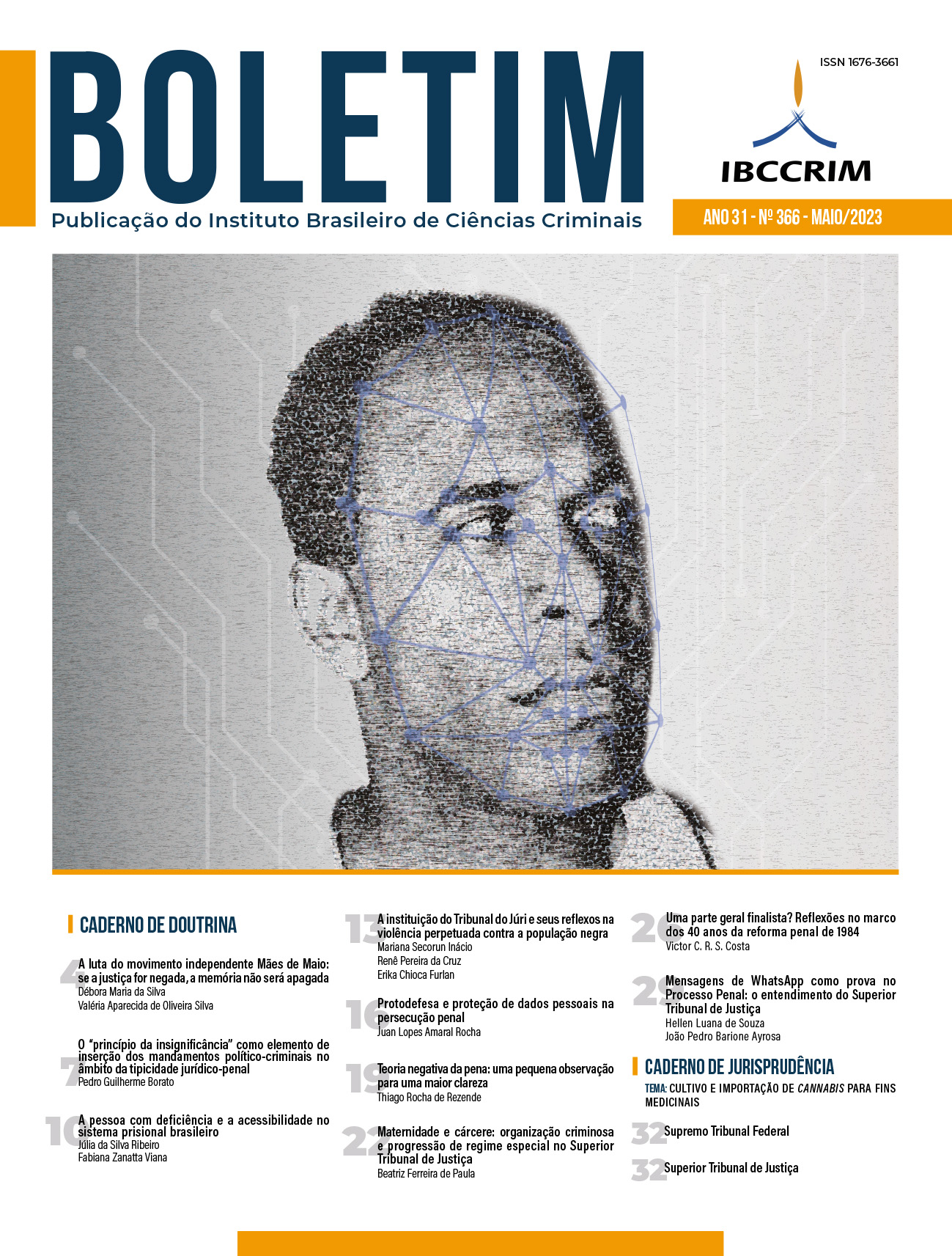Negative theory of the punishment: a small observation for a greater clarity
Views: 185Keywords:
Positive theories of punishment, Hypothesis, Negative theory of punishment, CritiqueAbstract
If punishment is so important to Criminal Law that (in Portuguese) it derives its own name ‒ Penal Law ‒ from it, it seems undeniable that the study of the theoretical constructions on punishment is essential to the study of Criminal Law. In this scope, this paper’s objective is to put a spotlight on the positive and negative theories of punishment, especially the contrasts between what their names may imply and what contents really are, focusing in the negative theory of punishment, in order to clarify some issues.
Downloads
Publication Facts
Reviewer profiles N/A
Author statements
- Academic society
- Instituto Brasileiro de Ciências Criminais
- Publisher
- IBCCRIM
References
BUNGE, Mario. La ciencia: su método y su filosofia. Buenos Aires: Sudamericana, 2001.
CARVALHO, Salo. Penas e medidas de segurança no direito penal brasileiro: fundamentos e aplicação judicial. São Paulo: Saraiva, 2013.
LAKATOS, Eva Maria; MARCONI, Marina de Andrade. Metodologia científica. São Paulo: Atlas, 1991.
LUCCHESI, Guilherme Brenner. A punição da culpa a título de dolo: o problema da chamada “cegueira deliberada”. 2017. 366 f. Tese (Doutorado em Direito do Estado) – Universidade Federal do Paraná, Curitiba, 2017.
ROXIN, Claus. Derecho penal, parte general, tomo I: fundamentos. Trad. Diego-Manuel Luzón Peña, Miguel Díaz y Garcia Conlledo e Javier de Vicente Remesal. Madrid: Civitas, 1997.
SANTOS, Juarez Cirino dos. Direito penal: parte geral. São Paulo: Tirant lo Blanch, 2020.
ZAFFARONI, Eugenio Raúl; BATISTA, Nilo et al. Direito penal brasileiro, volume I. Rio de Janeiro: Revan, 2003.
Downloads
Published
How to Cite
Issue
Section
License
Copyright of published articles belongs to the author, but with journal rights over the first publication and respecting the one-year exclusivity period. Authors may only use the same results in other publications by clearly indicating this journal as the medium of the original publication. If there is no such indication, it will be considered a situation of self-plagiarism.
Therefore, the reproduction, total or partial, of the articles published here is subject to the express mention of the origin of its publication in this journal, citing the volume and number of this publication. For legal purposes, the source of the original publication must be consigned, in addition to the DOI link for cross-reference (if any).


 Português (Brasil)
Português (Brasil)
 English
English
 Español (España)
Español (España)






